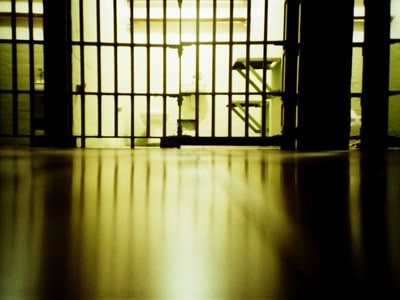Views on reforming the prison system
By W. P.

I have read articles, watched documentaries, and listened to many discussions about the American prison system. Most of them addressed issues of violence and living conditions, which are all legitimate concerns. However, there is a bigger problem that is not common knowledge to those outside the prison system. This problem is that people inside these prisons are not receiving the counseling and rehabilitation programs they need to overcome their negative habits and perspectives. The tools that are needed to create a healthy lifestyle are not available to them. In short, people in prison are being warehoused.
Instead of counselors and rehabilitation/self-help programs, recreational activities and other privileges are available for incarcerated people. Things such as indoor and outdoor basketball courts, softball fields, handball courts, indoor and outdoor exercise machines, musical instruments, board and card games, horseshoes, 45-channel cable, libraries with thousands of books, and TV rooms for those who don’t own a TV. At the prison commissary store incarcerated people may buy 13-inch televisions, dual cassette stereos, CD players, typewriters, portable radios, games, foods, beverages, snacks, coffee, cigarettes, clothing, and shoes, but not one self-help or inspirational book. All entertaining items are made available in an effort (a successful one) to keep incarcerated people subdued and distracted.
The self-help and rehabilitation programs that the prisons do offer are worthless. The institutions implement them so they can receive more funding from the federal government, and imprisoned people take them in an effort to be released sooner. In short, they’re being abused from both sides. But even if their efforts were sincere, they still could not benefit or grow from the programs. This is because the programs are not designed to help them. Most are designed and/or facilitated by unqualified people. I know one program which was created and is being facilitated by a parole officer. Programs such as: Thinking for a Change, Anger Management, Roadblocks To Recovery, Self-Esteem, and Cage your Rage are not facilitated by professional counselors, but caseworkers who were trained to shuffle paper. They have no training in facilitating or in counseling. They get an extra $50 to $100 a week for facilitating the programs. Sometimes outside volunteers facilitate the programs, but they have not been trained to facilitate self-help/rehab programs either. They just receive the security training necessary to work inside the prison.
The programs themselves mainly consist of reading out of a booklet and having a short discussion about the material that was read. I emphasize the word “short” because every one of these programs is only 16 hours long. What can you learn in 16 hours? Certainly not enough to change a lifestyle. And to make it even worse, the 16 hours are spread out over eight weeks, one two-hour class a week for eight weeks. This way they can list the programs as eight-week programs to make them sound more substantial.
When institutions are over their budget, the first thing they cut back on is the rehabilitation programs. I know of one institution where they suspended all programs implemented by the probation and parole department.
Most of these programs target those convicted of drug related offenses, but what about violent offenses, sex offenses, and those convicted of crimes such as fraud, larceny, slander, perjury, and other crimes? Shouldn’t each person be given the tools needed to make a fresh start?
Most incarcerated people have years to serve in prison. So why offer them programs that are only 16 hours long? Since they obviously lack good decision making skills, why aren’t there any professional counselors inside the prisons to help them deal with and correct their problems? Changes need to be made to correct these problems!
To change this system prisons need to focus on rehabilitation and not on making money. Currently the prison system is about making money. Some state prison systems, for example, the one in Missouri, are at the top of the state budget by a very wide margin. This hints that there may be financial reasons why 80 percent of formerly incarcerated people return back to prison. If the prison system is not specifically designed to reap these results (via, no competent help programs, and an abundance of meaningless recreational activities), then at the very least this machine is being kept in its current condition because of the results. For the Department of Corrections, 80 percent recidivism means more money from the federal government, more new prisons, more new jobs, more promotions more money, more money, more money.
There are people within the Department of Corrections who really do want to help, but they don’t have access to the money needed to fund intensive rehabilitation programs. The only thing they could do is speak out to state officials and the media about the need for program funding, but this would probably bring their career to a dead end.
Prisons should provide incarcerated people with the means to change their lifestyle, not put money in someone’s pocket. This means that there needs to be a major change in the approach to prisons and rehabilitation. Here is what I suggest.
Have a major university design, build, and operate a state prison. Get the federal government (or a private foundation) to pay for the construction and the first two years operating expenses. After two years all operating expenses will be covered by the university except for medical expenses and the salaries of prison guards, who will be the only state employees inside the prison and therefore will be paid by the state.
The prison will be staffed by university employees, even the parole officers. All policies will be created by a board made of university professors. Also each department within the prison shall be under the supervision of the senior professor in that respective area (finance department run by the professor of finance, food service run by professor of food service, etc.).
Further, a prison industry would be implemented by the university to pay all operating costs of the prison after the initial two years. This can be easily accomplished by requiring that each incarcerated person work 30 hours a week starting at $0.50 an hour and working their way up to $1.00 an hour. This gets them in the habit of working a regular job, which is a major requirement in today’s society. It allows them to make money ($100 a month) to buy food and other things from the prison commissary store. It also allows the university to operate without outside funding or interference, because the prison will be self-sustaining.
The prison will have an intensive rehabilitation program set up in step-down stages such as:
- 8) Prison Adjustment
- 7) Stress/Anger Solutions
- 6) Specific Area of Offense(s)
- 5) Violence
- 4) Drugs
- 3) Crime Impact On Victims
- 2) Job Skills
- 1) Re-entering Society
Each incarcerated person would be required to attend a program(s) for a certain amount of time each day (for example, two hours a day, five days a week) until they are released.
Also, counselors, program instructors, and parole officers will all play a major role in the parole hearing process. This will help give a complete picture of the incarcerated person’s progress towards rehabilitation, which will be a tremendous help in deciding whether the person is ready for release or not. Currently parole officers make parole decisions based upon a set of guidelines. They don’t even meet the incarcerated person until a few weeks before his parole hearing, and then there’s just a 30-minute interview.
This system will work for several reasons. First, it would be self-sustaining, not needing outside funding. In fact it would actually make a large profit. For example, take a business with 50 employees in which you paid each of them $10 an hour and they worked 40 hours a week year round. Their combined salaries would come to $1,040,000 each year. Now imagine having 1000 employees in which you paid each of them $100 dollars a month working 30 hours year round. Their salaries would come to 1,200,000. That’s having 1000 employees working for you for a little over the cost you would pay 50 workers (you would have tremendous profit margin). Getting offenders to work 30 hours a week for $100 a month will not be an issue. Most incarcerated people currently work 30 hours a week and get paid $8.50 a month. They would be happy to be able to work and earn money to buy extra food, cosmetics, writing supplies, stamps, and other things which make their incarceration more bearable.
Second, with competent counselors and psychologists available to guide them, along with the intensive rehabilitation programs, imprisoned people will have the tools needed for them to change their lifestyle. It will be easy to screen out those who aren’t making a sincere effort. These incarcerated people can be transferred to the mainstream prisons to make room for other people who are committed to rehabilitation. Policies could be made which only allow those who fit certain criteria to be admitted such as 15 year sentence or less, first time offenses, recommendation from another prison, etc.
Third, the university will be able to benefit by:
- offering specialized degrees in both corrections and rehabilitation;
- it will allow the university to give the students hands-on training in a number of different fields;
- many scientific studies could be done within the prison because it is a controlled environment;
- university enrollment will increase due to the university’s increase in popularity resulting from documentaries and articles about the prison and the university
- the university’s assets will increase from the prison industry; and
- soon other universities will create their own prison rehabilitation program.
After five to ten years of case studies and testing inside these university prisons, new standards could be set and required for all mainstream state prisons.
We need to give incarcerated people a fighting chance. If your son or daughter was troubled or was doing things that harmed themselves or others, you would immediately help them. And if their problem became worse, you would give them even more help. You wouldn’t lock them in a room that was full of recreation equipment and a television for years hoping they would get better, because you know that their problem doesn’t stem from the outside world, but from their own state of mind. Isolating them from their loved ones and the healthy things in their lives without providing a remedy for their attitudes, doesn’t help them; it only makes their condition worse. They become more uncaring and alienated.
So please give your son, daughter, wife, husband, uncle, aunt, cousin, neighbor, and fellow human being what they need. Help!
Incarcerated people
Many incarcerated people from all over the United States correspond with Venerable Thubten Chodron and monastics from Sravasti Abbey. They offer great insights into how they are applying the Dharma and striving to be of benefit to themselves and others in even the most difficult of situations.


